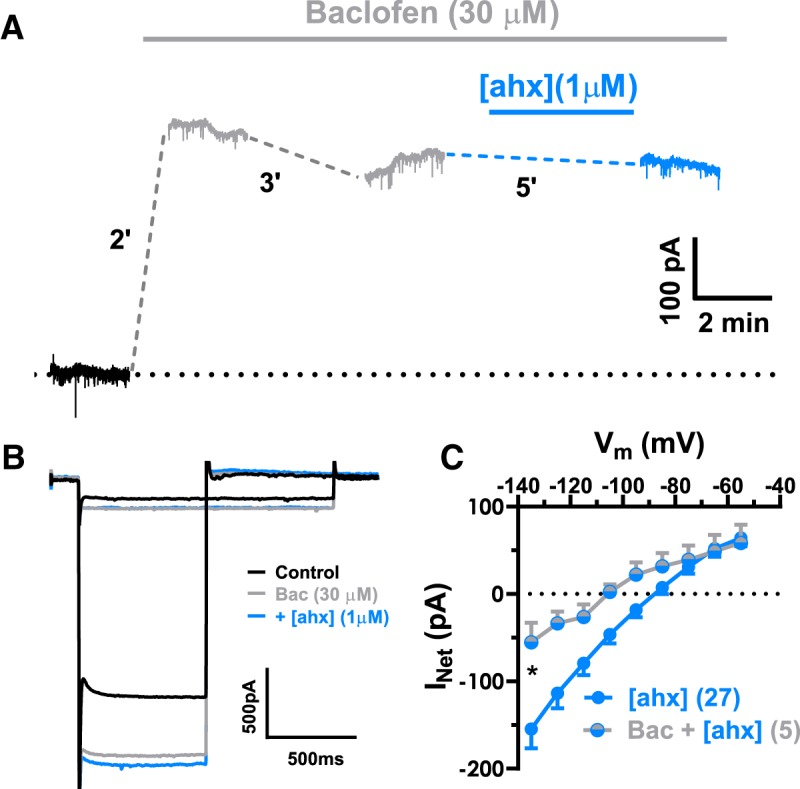Figure 7.

GABAB receptor activation prevents Y2R effects on PN conductance. A, Voltage-clamp (Vh = −55 mV) traces from a representative neuron during application of the GABABR agonist, baclofen (30 μm; gray). The steady-state holding current was substantially increased by baclofen. The baclofen-mediated outward current desensitized only minimally after prolonged (>5 min) drug treatment. In the continued presence of baclofen, addition of the Y2R agonist (blue) had little effect on the holding current. B, Representative PN current responses to a family of hyperpolarizing voltage-clamp steps from −55 mV (for clarity, only the steps from −55 mV to −65 mV and from −55 mV −135 mV are illustrated). Bath application of baclofen (30 μm) (gray) substantially enhanced this PN′s conductance relative to control (black), in the continued presence of baclofen, subsequent [ahx5–24]NPY (1 μm) application (blue) had little effect. C, I–V plots of the KIR current blocked by the Y2R agonist in the absence of other drugs [n = 27 (20 rats); blue] or in the presence of baclofen [n = 5 cells, 2 rats (blue + gray)] (two-way ANOVA; treatment: F(1,207) = 27.12, p < 0.0001; voltage: F(8,207) = 18.01, p < 0.0001; interaction: F(8,207) = 1.810, p = 0.0767). In the presence of baclofen, [ahx5–24]NPY reduced significantly less KIR current as indicated (Bonferroni's post-test). *p < 0.05.
